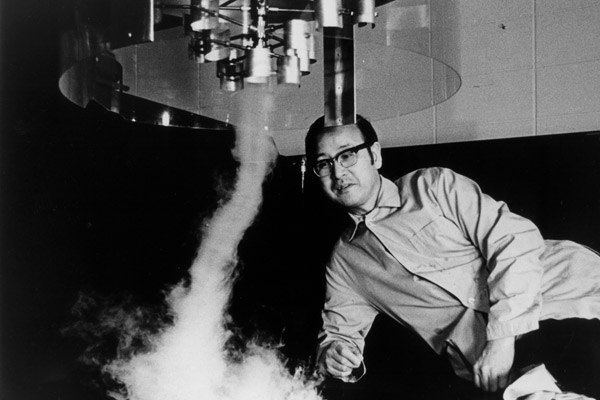
Photograph: The University of Chicago
Awhile back I looked at whether or not a tornado could hit Chicago; the answer is, obviously, yes, despite an apparent belief that tornadoes can't hit big cities. But there is a theory that big cities could provide some protection from tornadoes, as Tom Skilling writes:
Urban heat does appear to have a limited dampening effect on some weaker tornadoes. That was the contention of the late Dr. Ted Fujita, famed tornado researcher, who replicated this effect in his University of Chicago laboratory tornado machine.
By inserting red-hot wires into the tornadic vortices he created there, Fujita was able to demonstrate circulation disruptions. These occur, says long-time Fujita colleague Duane Stiegler, because tornadoes entrain most of their air near the earths surface.
Any interference due to rough urban surfaces or heating, which causes air to ascend rather than move horizontally into a tornados rotary circulation, takes a toll on some twisters' circulations.
Fujita, one of the legends of 20th century meteorology, revolutionized the study of tornadoes by reconstructing a F5 tornado that hit Fargo in 1957 just from hundreds of pictures taken of it. In the decades to come, he'd develop the famous Fujita scale (the "F" in "F5" stands for Fujita) by charting the damage done by tornadoes. But as Lee Sandlin writes in Storm Kings, Fujita never actually saw a tornado until 1982.
So at the University of Chicago, Fujita built his own tornado machine.
The video should start with the machine, but the whole thing is interesting, showing Dr. Fujita's meteorological detective work in action.


